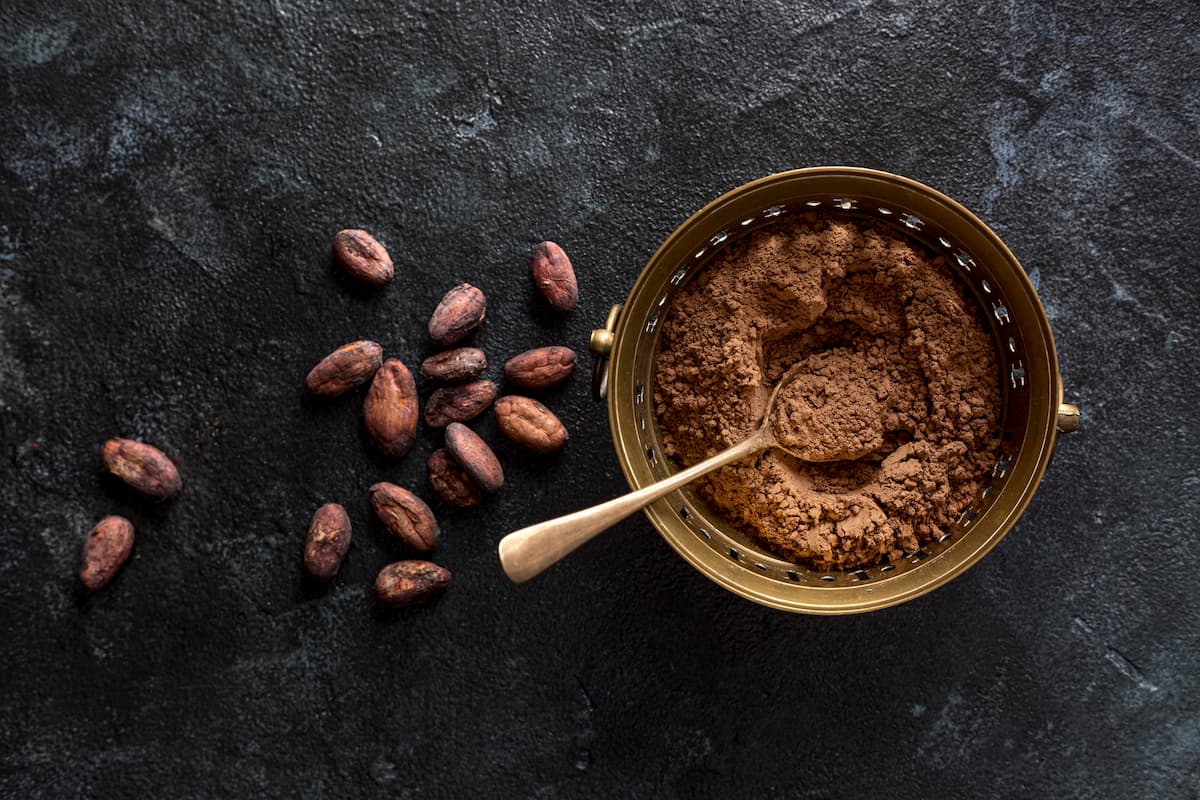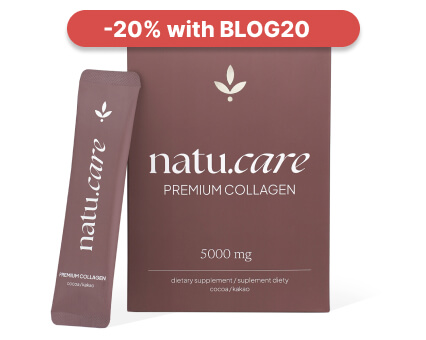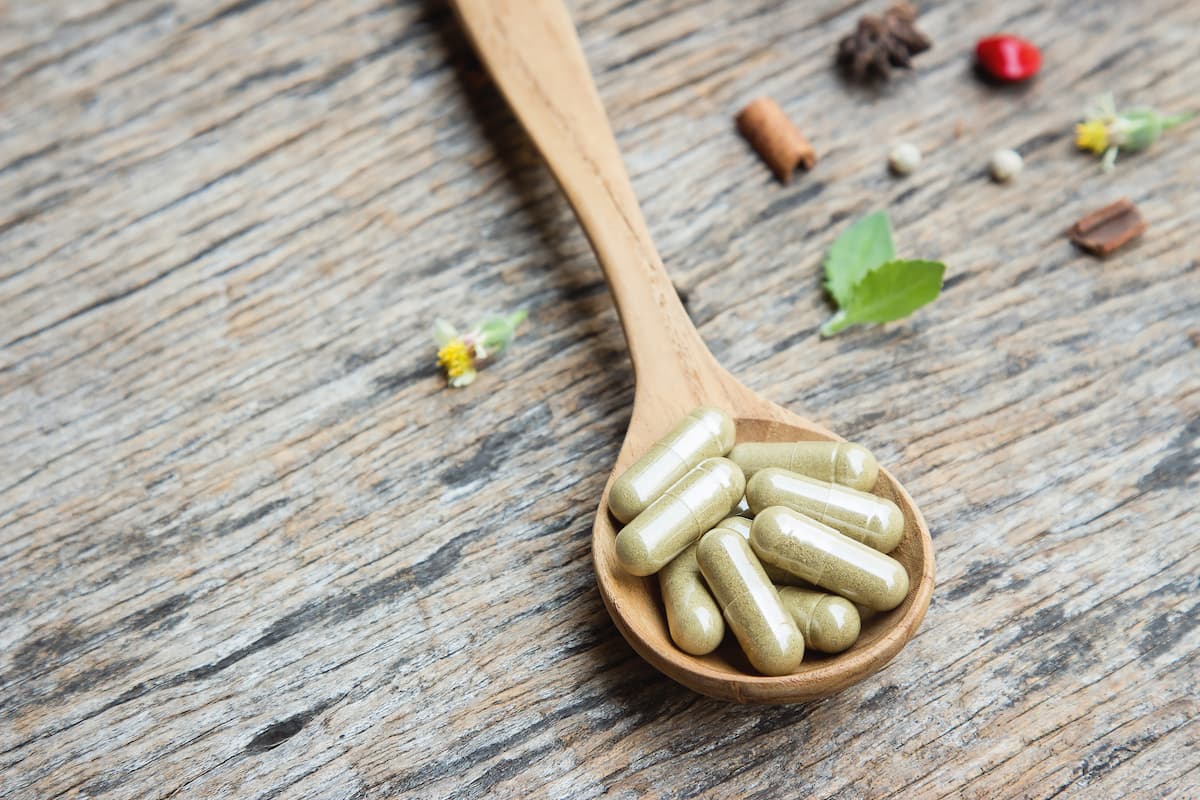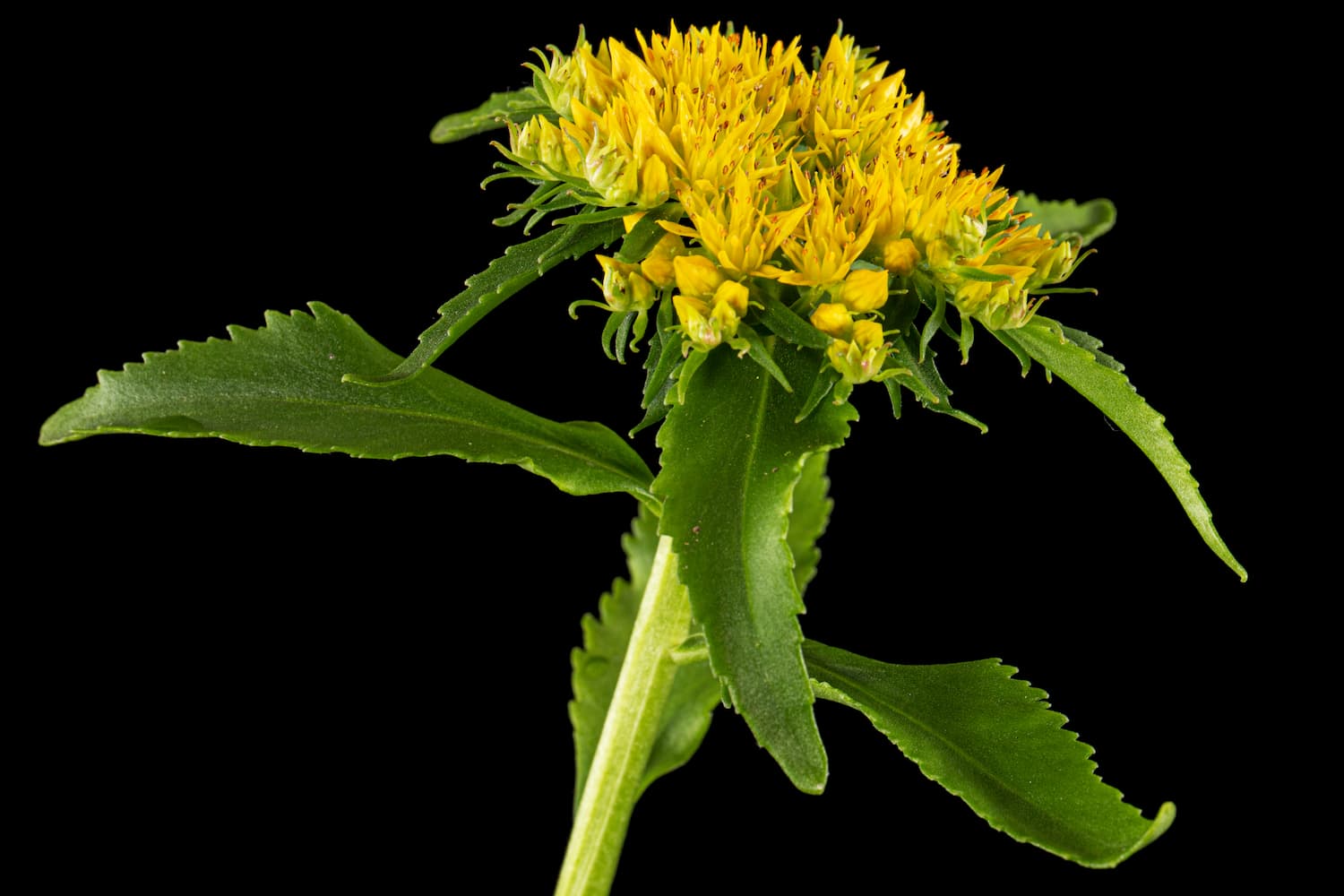Cocoa: properties, whether healthy, what it contains, contraindications
Cocoa is not only a tasty drink, but also a way to support the body's work.


Learn more about our editorial process
.

Learn more about our editorial process
.

Learn more about our editorial process
.

Learn more about our editorial process
.
Why you can trust us
Articles on Natu.Care are written based on scientific research, data from government websites and other reliable sources. The texts are written in cooperation with doctors, nutritionists and other health and beauty experts. Articles are reviewed before publication and during significant updates.
.Learn more about our editorial process
.Information about advertisements
Content on Natu.Care may contain links to products from the sale of which we may receive a commission. When creating content, we adhere to high editorial standards and take care to be objective about the products discussed. The presence of affiliate links is not dictated by our partners, and we select the products we review ourselves completely independently.
.Learn more about our terms and Conditions
.Hundreds of years ago it was called liquid gold, it can reduce ageing in the body, and during World War II it was one of the staple ingredients in soldiers' rations.
No, it's not some magic herb or infusion. It's cocoa. Exactly the same one you drink every day for breakfast.
Well, maybe not the same. There's a lot of sugar and unnecessary fillers added to many of today's products that don't support your body's function. But together with clinical nutritionist, Aleksandra Cudna, I'll show you how to choose a cocoa that will positively impact your health.
Cooking.
From this article you will learn:
- What cacao is, what its composition is and where it grows.
- What properties it has and where it grows.
- What properties it has and how it can support your health. .
- Whether cocoa is healthy, how many kcal it has and from when it can be given to your child.
- Who should drink cocoa?
- Who should not drink cocoa and whether pregnant and breastfeeding women are in this group. .

Zobacz, co może zrobić dla Twojego zdrowia i urody Natu.Care Kolagen Premium 5000 mg -15% z kodem BLOG15
Natu.Care Kolagen Premium 5000 mg, kakao
Natu.Care Kolagen Premium dla zdrowia stawów, skóry, paznokci i włosów. Najlepsza przyswajalność. Optymalna dawka 5 000 lub 10 000 mg. Przebadany przez niezależne laboratorium.
Zobacz więcej
Efekty zaczęłam dostrzegać po około 5 tygodniach. Włosy są nawilżone, przestały też wypadać. Moja wrażliwa cera przestała się przesuszać. Plus za pyszny smak!@Milena Dlugosz
See also:
What is cacao?
.
Cocoa is the raw seed of the cacao tree - a plant native to South America - which is the primary ingredient in chocolate. Cocoa beans are fermented, dried, roasted and then ground into a very fine powder known as cocoa. You can find cocoa in foods such as baking mixes, beverages (such as hot chocolate), chocolates, ice creams and many moreand.
What are the types of cocoa?
.
There are three varieties of cocoa - Criollo, Forastero, Trinitario. Each differs both in final flavour and growing characteristicsand.
.
|
Cocoa type . |
Flavour . |
Cultivation process |
Popularity |
|||||
|
Forastero |
Strong and bitter taste. |
Cultivated mainly in Africa and Southeast Asia. They have thick, strong structures that are able to survive in harsher climates. |
The most commonly cultivated type of cocoa. |
. | ||||
|
Trinitario |
A refined taste combining the strong aroma of Forastero and the delicacy of Criollo. |
Trinitario |
Trinitario. |
A hybrid species with Forastero and Criollo characteristics, grown in different regions of the world such as the Caribbean, Colombia and Venezuela. |
A hybrid species with Forastero and Criollo characteristics, grown in different regions of the world such as the Caribbean, Colombia and Venezuela. |
Commonly found more often than Criollo, but less frequently than Forastero. |
There are a number of different species. | |
|
Criollo |
Delicate flavour . |
Cultivated mainly in Central and South America. They require a suitably warm and humid climate. |
Rare type of cacao. |
Rarely found. |
What is the composition of cocoa?
.
Cocoa is full of various nutrients and bioactive compounds that add to its many health benefits. Cocoa's composition includes fibre, fats, minerals, antioxidants, as well as natural chemical compounds such as theobromine and caffeine, among others.
Macronutrients.
Macronutrients in cocoa:
- Fibre. Cocoa is a good source of dietary fibre, which helps regulate the digestive system, aids digestion and can contribute to maintaining healthy cholesterol levelsand. .
- Fats. Even 58% of cocoa beans are fats. Some of the most important are oleic acid (about 14%) and stearic acid (about 15%), which are beneficial for heart healthand. .
- Minerals. Cocoa provides important compounds such as magnesium, iron, potassium and copper, which are essential for the proper functioning of the bodyand.
- Antioxidants. Cocoa is rich in antioxidants, especially flavonoids, which can protect cells from the effects of harmful oxidative stress .
- Theobromine and caffeine. These are natural chemical compounds that are central nervous system stimulants. They can improve mood, concentration and general alertness. Theobromine is also responsible for the unique taste of cocoaand. .
Where does cacao grow?
.
Cocoa grows in areas with tropical climates around the world, especially in countries 20 degrees north and south of the equator. Its cultivation requires specific environmental conditions, including high humidity and warm temperatures and rainfall.
The world's largest cocoa producers are:
- Côte d'Ivoire - approximately 2 000 000 tonnes per year .
- Ghana - approximately 900 000 tonnes per year .
- Indonesia - approximately 650 000 tonnes per year .
- Nigeria - approximately 330 000 tonnes per year .
- Cameroon - approximately 300 000 tonnes per year .
Alkalinised versus non-alkalinised cocoa - what is the difference?
.
Alkalised cocoa, also known as 'Dutch cocoa', undergoes an alkalisation process, meaning it is treated with alkaline substances to increase its pH, improve its taste, colour and solubility in liquids. Non-alkalised cocoa is raw, unfermented cocoa beans that are less velvety in flavour and usually have a higher antioxidant content.
What health properties does cacao have?
.
Cocoa is not only a tasty drink or side dish, but also a solid support for your body (only if you choose a good product, of course, but more on that below). Rich in minerals, fats and fibre, cocoa affects various elements of the body. How does it work?
Prevents antioxidant damage
.
Cocoa is rich in polyphenols, which have many health benefits. Polyphenols are antioxidants that you can find in many natural sources, and their presence in cacao helps to improve heart health, brain function, balance blood sugar levels, and also supports skin health.
- .
- Improve heart health. Polyphenols help lower blood pressure, improve blood vessel elasticity and may prevent blood clots by inhibiting platelet aggregationand. .
- Supports brain function. As a result of the above effects, cacao may improve blood flow to the brain and also have a neuroprotective effect, meaning that it protects nerve cells from damage. A study on 34 elderly people found that cocoa could increase blood flow to the brain by 8% after one week and 10% after two weeks of regular intakeand.
- Blood sugar regulation. Polyphenols in cocoa have shown potential to reduce insulin resistance, which may help stabilise blood sugarand. .
- Potential anti-inflammatory effects. Polyphenols are known to counteract inflammation in the body, which may support the fight against various chronic conditions .
- Promoting skin health. Thanks to the polyphenols in cocoa, the skin can be protected from UV damage, which counteracts premature ageingand.
Reduces the risk of heart attack
.
There are studies that suggest that cocoa, and more specifically the compounds in it, such as flavonoids, may contribute to reducing the risk of heart attack.
Flavonoids are powerful antioxidants that reduce inflammation, improve lipid metabolism and help normalise blood pressure. All of these may contribute to reducing the risk of heart attackand.
A meta-analysis of nine studies involving a total of more than 150,000 people found that higher chocolate consumption was associated with a lower risk of heart disease, stroke and even death. It also proved that dark chocolate has better effects than milk chocolate.
Can support people with depression
.
Cocoa may support people suffering from depression due to bioactive components such as polyphenols, flavonoids, theobromine and small amounts of caffeine (so it is not advisable to drink it later than 6 hours before bedtime).
Flavonoids in cocoa may promote brain health by protecting nerve cells from damage and improving brain functions such as memory and mood. One of the mechanisms by which flavonoids may benefit us is by increasing blood flow and oxygen delivery to the brain.
Flavonoids in cacao are also known to promote brain health.
On the other hand, theobromine and caffeine are stimulants that can improve mood and increase energy levels. The presence of these stimulants can help alleviate some of the symptoms of depression, such as feeling tired and lacking interest in everyday things or hobbiesand.
Finally, cocoa contains phenylethylamine, a chemical compound that is naturally produced by the brain and thought to be the 'love compound'. Phenylethylamine stimulates the brain to produce endorphins, which are natural mood-enhancing chemicals.
The study was carried out in the United Kingdom.
A study of more than 13,000 people suggests that eating dark chocolate (containing more than 45% cocoa) may be associated with a lower risk of clinical depressionand.
Improves cognitive function
.
Flavonoids, which cocoa provides you with in large amounts, may positively affect cognitive function. Research suggests that they may affect brain function by improving perfusion, or blood flow to the brain, which supports cognitive function.
Cocoa is also a source of magnesium. This is an important mineral that supports brain health, including cognitive function, by supporting nerve conduction.
Cocoa is an important mineral that supports brain health, including cognitive function.
It is also worth mentioning theobromine, which has unique stimulant properties. Theobromine, like caffeine, can increase focus and improve moodand.
Note
.Although cocoa has many potential health benefits, it is no magic solution for enhancing cognitive abilities. Including cocoa in your diet should be combined with other healthy eating habits, regular physical activity, adequate hygiene sleep and good stress management.
.
Strengthens the immune system
.
Cocoa is a natural source of many bioactive substances that can benefit your immune system. Some of these are the already mentioned polyphenols, which are powerful antioxidants.
They help fight free radicals in the body - molecules that can cause inflammation and lead to cell damage. The antioxidant effects of the polyphenols in cocoa contribute to the protection of the immune system, supporting the body's natural defencesand.
Cocoa will also provide you with minerals such as zinc, iron or copper. These elements are essential for the proper functioning of immune cells, including lymphocytes (B and T). minerals affect the ability of immune cells to communicate and respond appropriately to threatsand.
.
Promotes gut health
.
Cocoa is rich in fibre, which is an important component of a diet that supports a healthy digestive system. It helps to regulate bowel function and supports regularity of bowel movements.
In addition, the fibre in cocoa also has a prebiotic effect. Prebiotics are substances that your body cannot digest, but uses as 'food' for the good bacteria in the gut microbiomeand.
A healthy microbiome has an important function in maintaining overall health, affecting not only the digestive system, but also the immune system, nervous system and many other processes in the body.
Research shows that polyphenols - of which there is no shortage in cocoa - can modulate the gut flora, promoting the growth of good bacteria and inhibiting the growth of pathogens. In this way, cocoa can help maintain the balance of bacteria in the gut, which has a beneficial effect on your healthand.
Is cocoa healthy?
.
Yes, cocoa is healthy. It contains antioxidants, helps fight free radicals and benefits the immune system. It also provides minerals such as magnesium, iron and copper, which are essential for the body to function properly. It also contains fibre, which takes care of the digestive systemand.
Outside of this, cocoa provides some stimulants, such as theobromine and caffeine, which can improve mood, concentration and general alertness.
.
Remember, however, that products containing cocoa, such as chocolate, not infrequently also have sugar and fats in them, which may not be beneficial to your health, especially when consumed too much. Therefore, it is always advisable to choose products with a high cocoa content and low additive content.
What is the healthiest cocoa?
.
The healthiest cocoa is all-natural, crushed beans that have not undergone any chemical or thermal processing. This product contains no additional sugar or fats. Instead, it is rich in nutrients that positively affect your body.
What are the characteristics of healthy, real cocoaand?
- A wealth of antioxidants. Raw cacao is full of antioxidants, which can protect the body from free radical damage.
- High fibre content.Cocoa powder is an excellent source of fibre, which is essential for a healthy digestive system.
- No added sugar or fats. Unlike chocolate or drinking cocoa, raw cocoa contains no added sugar or fats, making it lower in calories.
- Significant amounts of minerals. Cocoa provides the body with essential compounds such as magnesium, iron and copper, which have a key impact on various bodily functions.
Is cocoa with milk healthy?
.
Yes, cocoa with milk can be healthy. But not every single one. If you want to take care of yourself, choose good quality cocoa, not cocoa mixes that contain a lot of extra sugar. Also pay attention to your choice of milk and, as with everything, remember moderation.
- Quality of cocoa. When choosing cocoa, it is always a good idea to opt for natural, unsweetened cocoa powder. It is full of antioxidants and has all the health benefits mentioned above. .
- Type of milk. The type of milk you choose also matters. Whole milk will provide more calories, while some plant-based (no sugar added) milks may be lower in calories and better for those with lactose intolerance.
- No extra sugar. The key issue is to avoid extra sugar. Cocoa itself is quite bitter, but you can use natural sweeteners such as xylitol or stevia instead of sugar.
- Serving. Remember that everything in moderation - even cocoa with milk, served in huge quantities, can provide too many kilocalories. .
What is the glycaemic index of cocoa?
.
Crude cocoa powder has a very low glycaemic index (GI) - around 20. The glycaemic index is a measure of the effect of the food consumed on blood glucose levels. The lower it is, the milder the rise in blood sugar after eating a particular product, which is beneficial for healthand.
How many kcal does cocoa have?
.
Natural cocoa powder has approximately 228 kilocalories per 100 grams. A standard serving to make a cup of cocoa is about 1-2 tablespoons, which is roughly equivalent to 10-20 grams. Given the aforementioned calorific value, such a serving of unsweetened cocoa provides about 20-40 kilocalories.
Remember, however, that we are talking about natural cocoa powder all the time. The products that are available in shops usually contain additives such as sugar. What's more, the very milk on the basis of which you prepare your cocoa has extra kilocalories.
.
From what age can a child drink cocoa?
.
It is safest to start giving cocoa to children only from the age of 2. Earlier than that, such as in infants, a child's digestive system is sensitive, so there may be problems digesting some of the ingredients. In addition, cocoa contains small amounts of caffeine and theobromine, which is not recommended for young children.
Does cocoa cause constipation?
.
Cocoa, and dark chocolate in particular, is rich in fibre, which can support the maintenance of a regular bowel movement rhythm. So this product counteracts constipation rather than causing it. Well, unless you overdo it a bit - excess fibre can indeed lead to constipation.
Remember, however, that individual body reactions may vary, so if you see a link between cocoa consumption and digestive problems, consult your doctor.
Is cocoa digestible?
.
Cocoa in its natural and unsweetened form is generally considered to be easily digestible. It is a good source of fibre, which aids digestion. However, cocoa is often sold in the form of sweetened drinks or desserts, which may contain ingredients that are more difficult to digest, such as fats and sugars.
Remember also that reactions to cocoa can be individual - in some people even pure cocoa can cause digestive discomfort.
Is cocoa stimulating?
.
Cocoa contains a natural compound called theobromine, whose effects are mildly stimulating, similar to caffeine, although weaker. Caffeine itself can also be found in cocoa, but in small amounts.
This is why cocoa has a mildly stimulating effect.
This is why cocoa is popular as a small, natural 'stimulant'. In addition, it is rich in magnesium, which can help reduce fatigue and tiredness.
Does cocoa have gluten?
.
Pure, natural cocoa powder does not contain gluten and is safe for those on a gluten-free diet. However, remember that processed cocoa products, such as ready-made cocoa drinks or chocolate, may contain additives, including gluten. Therefore, always check labels carefully.
It is also worth looking for the crossed-thorn mark on the packaging, which indicates that the product is completely safe for people with coeliac disease and gluten intolerance.
Cocoa - uses
.
Cocoa, due to its richness in nutrients and unique taste, has a wide range of applications - both in the kitchen and in cosmetics. It serves as a basic ingredient in many delicacies, as well as being used in baking and cooking. At the same time, due to its beneficial properties for the skin, it is a frequent ingredient in cosmetics.
.
Cocoa is a key ingredient in recipes such as chocolate cake, hot chocolate or tiramisu.
Cocoa is also a common ingredient in skin care products such as masks, scrubs and lotions.
|
Application . |
How is it used . |
|
Kitchen |
Cocoa is a key ingredient in recipes such as chocolate cake, hot chocolate or tiramisu. |
|
Cosmetics |
Because of its antioxidant content, cocoa is a common ingredient in skin care products such as masks, scrubs and lotions.
|
|
Medicinal |
Because of its health benefits, cocoa is being researched for medicinal uses, such as improving heart health or mood. |
What is ceremonial cocoa?
.
Ceremonial cocoa is a specific type of raw, unprocessed, defatted cocoa that undergoes only gentle fermentation. It is particularly rich in nutrients and bioactive compounds such as theobromine.
The tradition of drinking ceremonial cacao dates back to the ancient Mayans and Aztecs, who treated cacao as a sacred drink. Ceremonial cacao, as the name implies, is often prepared in a special way, with the addition of natural ingredients such as chilli and cinnamon.
Traditional Mexican cacao is a special drink.
Traditional Mexican ceremonial cocoa is sold in blocks or tabs. These blocks contain ground cacao alone or together with additives such as sugar, cinnamon and sometimes chilli.
To prepare the drink, a piece of such a block is grated or dissolved directly into hot milk. This is a more traditional method of preparing ceremonial cocoa than the classic use of a ready-made powder.
The recipe is more traditional.
What is the recipe for ceremonial cocoa?
.
Ingredients
.
- 2 cups of milk (can be plant-based, such as almond milk) .
- 2 tbsp raw cocoa powder .
- 2 teaspoons honey or agave (as desired) .
- 1/4 teaspoon cinnamon .
- Pinch of hot pepper .
- Pinch of salt .
Method of preparation
- Pour the milk into a small saucepan and add all the other ingredients.
- Pour the milk into a small saucepan and add all the other ingredients.
- Heat the mixture over a moderate heat, stirring constantly so that the cocoa and honey are well dissolved.
- Then the mixture is ready to use.
- When the mixture is hot (but not boiling), turn off the heat and whisk until frothy. You can use a hand beater or mixer. .
- Pour into cups and serve immediately. .
Note
Ceremonial cocoa is traditionally thicker and more intense in flavour than typical chocolate drinks. You can adjust the intensity by adding more or less cocoa and adjusting the amount of additives.
See also recipes with Natu.Care collagen:
.
- Cocoa with Collagen
- Own Snickers
- Collagen bars
- Milkshake
- Ferrero Rocher balls
- Cocoa pudding
- Pancakes
- Omlet
- Breakfasts with collagen
What are the contraindications to consuming cocoa?
.
Cocoa consumption can have many health benefits, but not everyone can - or should - enjoy them. While cocoa will be perfectly safe for most people, there are certain groups of people who should shy away from it.
Cocoa is not a good choice for most people.
Contraindications to consuming cocoaand:
- Allergies. Cocoa allergy is quite rare, but when it occurs, it can cause skin reactions, sneezing, abdominal cramps, and in some cases, even anaphylaxis. .
- Sleep disturbances. Cocoa contains small amounts of caffeine, which can lead to increased insomnia or other sleep disturbances.
- Gastro-oesophageal reflux and stomach ulcers. Cocoa may aggravate symptoms of gastro-oesophageal reflux and irritate the stomach in people with ulcers. .
- Blood clotting disorders. Cocoa may inhibit blood clotting, which will pose an additional risk for people with pre-existing blood clotting problems or those preparing for surgery.
Is it okay to drink cocoa during pregnancy?
.
Yes, you can drink cocoa during pregnancy, but in moderation. Cocoa is a natural source of caffeine and although it contains less caffeine than coffee, it can still be detrimental. While expecting a baby, it is recommended to limit caffeine intake to 200 mg per day, which is equivalent to about 2-3 cups of cocoaand.
Agreed, that's a lot. But remember that caffeine is also present in other products such as chocolate, some fizzy drinks, and painkillers and cold medicines.
In a nutshell: you can drink cocoa during pregnancy, but in moderation. And if you are concerned about the effects of its consumption, consult your doctor.
Cocoa and breastfeeding
.
While breastfeeding, the rules regarding cocoa consumption are similar to those during pregnancy. The caffeine contained in cocoa passes into breast milk. Therefore, if you drink a lot of cocoa, your little one may become restless or have sleep problems.
This is why, as with pregnancy, it is generally recommended to limit caffeine intake to 200-300 mg per day for a breastfeeding mother.
What are the best substitutes for cocoa?
.
If you cannot consume cocoa, don't worry. There are several good substitutes for this product. Choosing a particular one depends on individual preference, the purpose of the cocoa substitution and dietary restrictions. Among what you can choose from?
Has a natural sweet taste.
Has more calories than other options, and contains caffeine and theobromine.
|
Product |
Characteristics . |
Pluses |
Minusals |
||
|
Carob |
Has a natural, slightly sweet taste. |
Gluten-free, caffeine-free and rich in fibre. |
Tastes different from cocoa and can be hard to find. |
Tastes different from cocoa and can be hard to find. |
|
|
Milled coffee |
May be used as a substitute for cocoa in dessert recipes. |
Adds an intense flavour and is readily available. |
Contains caffeine, and is distinguished by its different flavour from cocoa. |
It has a different taste than cocoa. |
|
|
Milled nuts . |
Milled nuts can add a creamy texture to a variety of desserts. |
They are rich in protein and healthy fats. |
They are rich in protein and healthy fats. |
They are characterised by their high calorie content and potential exposure to allergies. |
They are also high in calories and potential exposure to allergies. |
|
Bitter chocolate . |
Contains cocoa, but has not much sugar. |
Very rich in flavour and great availability. |
Has more calories than other options, and contains caffeine and theobromine. |
Interesting recipes with cocoa
.
Cocoa has more than one name -especially in recipes. You can use it in dozens, hundreds, and probably thousands of ways. Below you will find four interesting recipes using cocoa.
Power balls a'la Ferrero Rocher with collagen
.
Ingredients:
.
- 70 g dates .
- 130 g hazelnuts .
- 1 sachet of Cacao Bloom collagen .
- 60 g oatmeal .
- 20 g canned coconut milk .
- 10 g cacao .
Preparation:
- Pour hot water over the dates and leave for 30 minutes.
- Pour hot water over the dates.
- Place the oatmeal and nuts in a coffee grinder or food processor and grind finely.
- Add the oatmeal and nuts.
- Add the drained dates, sachet of Cacao Bloom collagen, coconut milk and cacao and blend all in a blender. .
- Form balls with wet hands and coat them in nuts. .
- Eat immediately or set aside to chill. .
Natu.Care Collagen Premium 5000 mg, cocoa

- Collagen content: 5000 mg marine collagen hydrolysate
- .
- Additional active ingredients: vitamin C, low molecular weight hyaluronic acid (and L-theanine and coenzyme Q10 in cocoa flavoured collagen or vitamin A and vitamin E in mango–passion fruit flavoured collagen)
- .
- Form: powder sachets
- .
- Dose: 1 sachet per day
- .
- Sufficient for: 30 days
- .
Product description
Fish collagen from the Natu.Care brand in a dose of 5000 mg, based on certified ingredients of the best quality. Regular supplementation will positively influence the appearance of the skinóry, hairów and nails – they will be rebuilt and strengthened from the inside.
In addition to collagen, which is valuable for health and beauty, it also offers other active ingredients that help to maintain a youthful complexion, shiny hair and strong nails.
The formula contains a sufficient portion of the active ingredient to positively affect joints, the musculoskeletal system and immunity.
Natu.Care Premium Collagen is available in two – Cacao Bloom and Rise&Shine flavours. Both formulas are based on the following active ingredients: marine collagen hydrolysate, wild róve bud extract and hyaluronic acid.
Additionally, Cacao Bloom contains natural L-theanine, coenzyme Q10 and defatted Dutch cacao. Rise&Shine instead contains vitamin E and vitamin A.
These are the best collagens in the world.
These best fish collagens on the market also rós taste – Cacao Bloom is a treat for chocolate lovers. Rise&Shine will appeal to those whoólike the refreshing taste of mangoófruit and passion fruit.
Pros and cons
Fish collagen from the Natu.Care brand in a dose of 5000 mg, based on certified ingredients of the best quality. Regular supplementation will positively influence the appearance of the skinóry, hairów and nails – they will be rebuilt and strengthened from the inside.
In addition to collagen, which is valuable for health and beauty, it also offers other active ingredients that help to maintain a youthful complexion, shiny hair and strong nails.
The formula contains a sufficient portion of the active ingredient to positively affect joints, the musculoskeletal system and immunity.
Natu.Care Premium Collagen is available in two – Cacao Bloom and Rise&Shine flavours. Both formulas are based on the following active ingredients: marine collagen hydrolysate, wild róve bud extract and hyaluronic acid.
Additionally, Cacao Bloom contains natural L-theanine, coenzyme Q10 and defatted Dutch cacao. Rise&Shine instead contains vitamin E and vitamin A.
These are the best collagens in the world.
These best fish collagens on the market also rós taste – Cacao Bloom is a treat for chocolate lovers. Rise&Shine will appeal to those whoólike the refreshing taste of mangoófruit and passion fruit.
Additional information
Fish collagen from the Natu.Care brand in a dose of 5000 mg, based on certified ingredients of the best quality. Regular supplementation will positively influence the appearance of the skinóry, hairów and nails – they will be rebuilt and strengthened from the inside.
In addition to collagen, which is valuable for health and beauty, it also offers other active ingredients that help to maintain a youthful complexion, shiny hair and strong nails.
The formula contains a sufficient portion of the active ingredient to positively affect joints, the musculoskeletal system and immunity.
Natu.Care Premium Collagen is available in two – Cacao Bloom and Rise&Shine flavours. Both formulas are based on the following active ingredients: marine collagen hydrolysate, wild róve bud extract and hyaluronic acid.
Additionally, Cacao Bloom contains natural L-theanine, coenzyme Q10 and defatted Dutch cacao. Rise&Shine instead contains vitamin E and vitamin A.
These are the best collagens in the world.
These best fish collagens on the market also rós taste – Cacao Bloom is a treat for chocolate lovers. Rise&Shine will appeal to those whoólike the refreshing taste of mangoófruit and passion fruit.
User review
Fish collagen from the Natu.Care brand in a dose of 5000 mg, based on certified ingredients of the best quality. Regular supplementation will positively influence the appearance of the skinóry, hairów and nails – they will be rebuilt and strengthened from the inside.
In addition to collagen, which is valuable for health and beauty, it also offers other active ingredients that help to maintain a youthful complexion, shiny hair and strong nails.
The formula contains a sufficient portion of the active ingredient to positively affect joints, the musculoskeletal system and immunity.
Natu.Care Premium Collagen is available in two – Cacao Bloom and Rise&Shine flavours. Both formulas are based on the following active ingredients: marine collagen hydrolysate, wild róve bud extract and hyaluronic acid.
Additionally, Cacao Bloom contains natural L-theanine, coenzyme Q10 and defatted Dutch cacao. Rise&Shine instead contains vitamin E and vitamin A.
These are the best collagens in the world.
These best fish collagens on the market also rós taste – Cacao Bloom is a treat for chocolate lovers. Rise&Shine will appeal to those whoólike the refreshing taste of mangoófruit and passion fruit.
Vegan no-bake chocolate cake
.
Ingredients
.
- 200 g dates .
- 100 g almonds .
- 3 tbsp cocoa
- 3 tbsp cocoa .
- Pinch of salt .
- 1 teaspoon vanilla extract .
Preparation
- Soak the dates in hot water for 10 minutes; .
- Blend the almonds and dates to a loose paste.
- Add the almonds and dates.
- Add the cocoa, salt and vanilla and blitz everything together. .
- Pour the prepared mixture onto a baking tray lined with baking paper and level. .
- Place in the fridge for 2 hours or in the freezer for 30 minutes. .
- Cut into portions and serve. .
What is the price of cocoa?
.Usual cocoa can be purchased for as little as a few zlotys for a packet of about 100g. More expensive varieties, on the other hand, will cost a dozen or even several tens of zlotys.
Casual cocoa can be purchased for as little as a few zlotys.
.
Collagen cocoa
.
Ingredients
.
- milk or vegetable drink (e.g. soya) 300 g (1.2 cups) .
- Natu.Care Collagen Premium 5000 mg, cocoa .
- cinnamon 2.5 g (½ teaspoon) .
- cardamom 1 g (pinch) .
Preparation
- Gently heat the milk until it is warm but not boiling.
- Transfer the milk to a mixing bowl.
- Pour the milk into a mug. .
- Add the collagen, cinnamon and cardamom. .
- Stir the whole thing thoroughly - you can do this with a milk frother. .
Cocoa with chilli
.
Ingredients
- 2 cups of milk .
- 2 tablespoons cocoa .
- 1 teaspoon honey .
- A pinch of chili .
Preparation
- Boil the milk, add the cocoa, honey and chilli.
- Stir until smooth.
- Stir until everything is dissolved.
- Pour into a cup.
- Pour into a cup and serve hot. .
Brownie made with yams
.
Ingredients
.
- 1 large yam .
- 1/2 cup nut flour (e.g. almond flour) .
- 1/4 cup cocoa .
- 1/4 cup maple syrup .
Preparation
.
- Bake the beaten cacao in the oven, and when cooled, blitz to a purée.
- Bake the cacao in the oven, and when cooled, blitz to a purée.
- Add the flour, cocoa and maple syrup and mix well - the mixture should be smooth.
- Add the flour, cocoa and maple syrup and mix well.
- Transfer to a tin lined with baking paper. .
- Bake for 20-30 minutes in an oven preheated to 180°C. .
- When removed from the oven, allow to cool, then cut into portions and serve. .
See also other articles about plants:
Summary
.
- Cacao is the raw seed of the cacao tree, a plant native to South America, used as the primary ingredient in chocolate.
- Cacao is the raw seed of the cacao tree, a plant native to South America, used as the primary ingredient in chocolate.
- There are three varieties of cacao - Criollo, Forastero, Trinitario - which differ in flavour and growing characteristics.
- Cacao is a plant from South America.
- Cocoa is rich in nutrients such as fibre, fats, minerals, antioxidants, as well as natural chemical compounds - including theobromine and caffeine. .
- Cocoa grows in areas with tropical climates, with the Ivory Coast being the world's largest producer. .
- Cocoa's health properties include reducing antioxidant damage, improving heart health, supporting brain function, regulating blood sugar levels, anti-inflammatory effects and supporting skin health.
- Over-consumption of cocoa products, such as chocolate, can lead to an increased risk of heart disease due to the sugar and fat often contained in them.
- For health, natural, crushed cocoa beans that have not been chemically or thermally treated and do not contain extra sugar or fats are best.
- The best way to eat cocoa is with natural, crushed cocoa beans.
- It is safest to start giving cocoa to children only from the age of 2. .
- Ceremonial cocoa is raw, unprocessed cocoa that undergoes gentle fermentation, which is particularly rich in nutrients.
- Ceremonial cocoa is raw, unprocessed cocoa that undergoes gentle fermentation, which is particularly rich in nutrients.
- People with cocoa allergies, sleep disorders, gastro-oesophageal reflux, stomach ulcers and blood clotting disorders should avoid consuming cocoa. .
- You can drink cocoa during pregnancy and while breastfeeding, but do so in moderation. .
FAQ
Is DecoMorreno cocoa healthy?
.DecoMorreno cocoa is healthy, but only if consumed in moderation. Per 100 grams, it contains 303 kcal of energy, 23.5 g of protein, 13 g of carbohydrates (including just 0.5 g of sugars), 10.5 g of fat (including 6.4 g of saturated fat) and 0.86 g of salt, which is not bad. However, saturated fat in excess can adversely affect heart health, so you need to be careful.
Can you eat cocoa powder?"
.Directly eating cocoa powder is not recommended. In this form, it is bitter, which can be disgusting. Furthermore, the dusty texture of cocoa powder can also cause stewing. Therefore, it is much better to add cocoa to a smoothie or shake and consume it in this form.
How to make cacao without cooking it
.To make cocoa without cooking, prepare 1-2 teaspoons of cocoa powder and a glass of milk. Add the cocoa to the glass of milk, mix well until dissolved (use a blender for better results). If necessary, sweeten as desired (e.g. with xylitol, erythritol or stevia). Remember that cocoa dissolves better in warm liquid.
.Can cocoa be cultivated in Poland?
.No, the cultivation of cocoa in Poland is impossible due to unsuitable climatic conditions. The cacao tree, in order to grow and produce fruit properly, needs a tropical climate with high humidity and temperature, which cannot be reproduced in the Polish climate.
.How many tablespoons of cocoa to use per litre of milk?
.To make a cocoa drink from a litre of milk, use about 2-4 tablespoons of cocoa (depending on your taste preference). This amount will ensure a suitably intense flavour. At this proportion, the cocoa drink will have a full, rich aroma and be suitably thick.
How to make cocoa in an espresso maker
.Preparing cocoa in a coffee machine is very simple. First, fill the milk container halfway and then add 2-4 tablespoons of cocoa to it, depending on your preferred taste. Then use the machine's milk frothing function to thoroughly mix the cocoa into the milk.
If your machine has a hot chocolate function, now is the right time to activate it and wait for the hot cocoa.
Does cocoa raise blood sugar levels?
.Yes, cocoa can raise blood sugar levels, especially when consumed in the form of sweetened drinks or desserts. Cocoa itself does not contain sugar, but it is often mixed with it.
Therefore, people with diabetes or other glycaemic problems should not consume sweetened cocoa products and should replace them with cocoa without added sugar or with sweeteners (xylitol, erythritol).
Does cocoa raise blood pressure?
.Cocoa contains theobromine, a natural compound similar to caffeine that has a mild stimulant effect. However, studies have shown that the flavonoids in cocoa can have beneficial effects on the cardiovascular system by, among other things, lowering blood pressure. You can therefore confidently drink cocoa, especially if you have problems with hypertension, which will further support its therapy.
How to cook cacao
.To prepare the perfect cocoa, heat 250 ml of milk in a small pot. But don't bring it to the boil; cocoa doesn't need to be boiled, nor should it. In a bowl, combine 2 teaspoons of cocoa and 1-2 teaspoons of sugar (to your liking).
Add a splash of warm milk to the cocoa mixture, then stir until you have a smooth paste. Pour the paste into the warming milk and stir until the ingredients are combined and hot enough. Now your homemade cocoa is ready for tasting.
.What can you make with cocoa quickly?
One of the quickest and easiest recipes to use cocoa is a hot cocoa drink. Simply mix 2 tablespoons of cocoa with 2 teaspoons of sugar, then add this to a glass of hot milk, stirring until dissolved.
You can also make a quick bowl of chocolate oatmeal by adding a tablespoon of cocoa to it.
Another option is a quick version of brownie in a cup - mix a tablespoon of flour, a tablespoon of cocoa, a tablespoon of sugar, a few drops of vanilla, a teaspoon of oil and a teaspoon of water, then microwave for 60 seconds and you're done
Can cocoa go out of date
.Yes, cocoa powder - like other foods - has an expiry date, which is always marked on the packaging. After this date, not only the taste but also the health properties may change.
What's more, after the expiry date, the product can become an environment for bacteria or mould to grow. Therefore, it is not advisable to consume out-of-date cocoa.
How to make cocoa for a person with diabetes?
.Preparing a cocoa drink for a diabetic requires a few modifications. Instead of using sugar, you can use natural sweeteners such as stevia, xylitol or erythritol. To a litre of milk (preferably non-fat or plant-based with no added sugar like almond milk or soya milk), add 2-4 tablespoons of unprocessed cocoa powder and a sweetener if necessary.
Stir it all together thoroughly, then heat over low heat, stirring constantly, until the drink is hot enough. Remember to control your intake of such drinks, despite using healthier ingredients.
Does white chocolate have cocoa?
.White chocolate does not contain cocoa pulp, which is the main ingredient in dark and milk chocolate, giving them their characteristic cocoa flavour. However, it is made from cocoa butter - the fat extracted from the cocoa bean.
Although it is a cocoa-derived product, its taste and properties are different from typical cocoa.
Is cocoa with water any good?
.Cocoa with water is less creamy than traditional cocoa made with milk, but can be a good alternative for people who cannot or do not want to consume milk. Water does not add extra kilocalories, fat or protein, making the drink lighter. To improve the taste of cocoa on water, you can add a small amount of sweetener or honey.
.
Sources
.See all
.dos Santos, E. C., Pirovani, C. P., Correa, S. C., Micheli, F., & Gramacho, K. P. (2020). The pathogen Moniliophthora perniciosa promotes differential proteomic modulation of cacao genotypes with contrasting resistance to witches´ broom disease. BMC Plant Biology, 20(1), 1. https://doi.org/10.1186/s12870-019-2170-7
Effects of cocoa products/dark chocolate on serum lipids: A meta-analysis | European Journal of Clinical Nutrition. (n.d.). Retrieved 6 Sep 2023, from https://www.nature.com/articles/ejcn201164
Ellam, S., & Williamson, G. (2013). Cocoa and human health. Annual Review of Nutrition, 33, 105-128. https://doi.org/10.1146/annurev-nutr-071811-150642
Hayek, N. (2013). Chocolate, gut microbiota, and human health. Frontiers in Pharmacology, 4, 11. https://doi.org/10.3389/fphar.2013.00011
Jackson, S. E., Smith, L., Firth, J., Grabovac, I., Soysal, P., Koyanagi, A., Hu, L., Stubbs, B., Demurtas, J., Veronese, N., Zhu, X., & Yang, L. (2019). Is there a relationship between chocolate consumption and symptoms of depression? A cross-sectional survey of 13,626 US adults. Depression and Anxiety, 36(10), 987-995. https://doi.org/10.1002/da.22950
Katz, D. L., Doughty, K., & Ali, A. (2011). Cocoa and Chocolate in Human Health and Disease. Antioxidants & Redox Signaling, 15(10), 2779-2811. https://doi.org/10.1089/ars.2010.3697
Latif, R. (2013b). Health benefits of cocoa. Current Opinion in Clinical Nutrition and Metabolic Care, 16(6), 669-674. https://doi.org/10.1097/MCO.0b013e328365a235
Martín, M. A., Goya, L., & de Pascual-Teresa, S. (2020). Effect of Cocoa and Cocoa Products on Cognitive Performance in Young Adults. Nutrients, 12(12), 3691. https://doi.org/10.3390/nu12123691
Martin, M. Á., & Ramos, S. (2021). Impact of cocoa flavanols on human health. Food and Chemical Toxicology: An International Journal Published for the British Industrial Biological Research Association, 151, 112121. https://doi.org/10.1016/j.fct.2021.112121
Theobroma oil - review | ScienceDirect topics. (n.d.). Retrieved 4 September 2023, from https://www.sciencedirect.com/topics/pharmacology-toxicology-and-pharmaceutical-science/theobroma-oil
Rusconi, M., & Conti, A. (2010). Theobroma cacao L., the Food of the Gods: A scientific approach beyond myths and claims. Pharmacological Research, 61(1), 5-13. https://doi.org/10.1016/j.phrs.2009.08.008
Scholey, A. B., French, S. J., Morris, P. J., Kennedy, D. O., Milne, A. L., & Haskell, C. F. (2010). Consumption of cocoa flavanols results in acute improvements in mood and cognitive performance during sustained mental effort. Journal of Psychopharmacology (Oxford, England), 24(10), 1505-1514. https://doi.org/10.1177/0269881109106923
Socci, V., Tempesta, D., Desideri, G., De Gennaro, L., & Ferrara, M. (2017). Enhancing Human Cognition with Cocoa Flavonoids. Frontiers in Nutrition, 4, 19. https://doi.org/10.3389/fnut.2017.00019
Sorond, F. A., Lipsitz, L. A., Hollenberg, N. K., & Fisher, N. D. (2008). Cerebral blood flow response to flavanol-rich cocoa in healthy elderly humans. Neuropsychiatric Disease and Treatment, 4(2), 433-440.
Strandberg, T. E., Strandberg, A. Y., Pitkälä, K., Salomaa, V. V., Tilvis, R. S., & Miettinen, T. A. (2008). Chocolate, well-being and health among elderly men. European Journal of Clinical Nutrition, 62(2), 247-253. https://doi.org/10.1038/sj.ejcn.1602707
Tan, T. Y. C., Lim, X. Y., Yeo, J. H. H., Lee, S. W. H., & Lai, N. M. (2021). The Health Effects of Chocolate and Cocoa: A Systematic Review. Nutrients, 13(9), 2909. https://doi.org/10.3390/nu13092909
Wang, X., Qi, Y., & Zheng, H. (2022). Dietary Polyphenol, Gut Microbiota, and Health Benefits. Antioxidants, 11(6), 1212. https://doi.org/10.3390/antiox11061212
.
Editorials
Meet the team



Ashwagandha affects thyroid hormone levels. Find out if you can use it.

See how mountain pintail can affect your wellbeing.

Check out the opinions of doctors and other professionals about ashwagandha. Also find out what people on the forum think about it.
